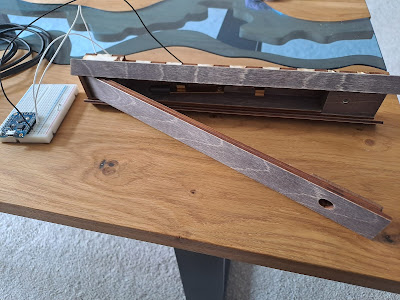We have buttons and LED's available to the system so it's probably time to introduce some element of movement. One of the cheapest and easiest ways to do this is with a servo, typically a small geared electric motor with it's own built in control circuitry. A single digital control line commands the servo to drive to a specific angle and the servo monitors it's own position as it attempts to move to that angle as quickly as possible. Servos are very versatile devices, you can get some basic 9g servos for only a few pounds each. Servos come in a range of standard rectangular sizes so they're easy to draw and have mounting points built into the plastic shells. If you require stronger/faster movement you can often buy a more expensive servo that fits into the same space and is controlled in exactly the same way so switching them over is incredibly easy. Most servos are controlled through a standard three wire connection, two wires for power and GND, the third wire car...






